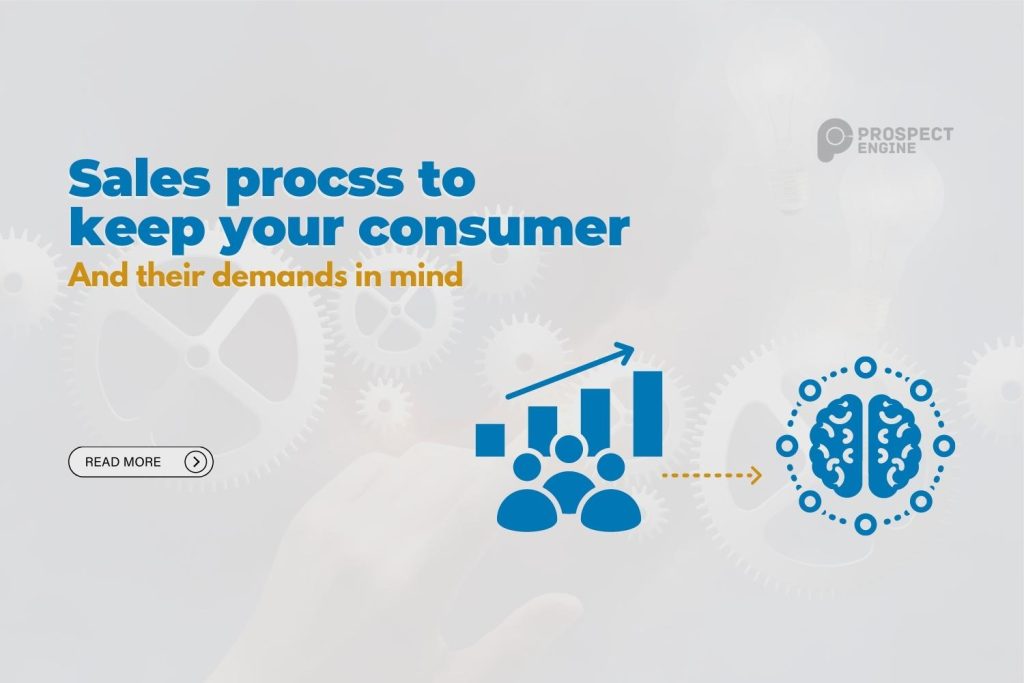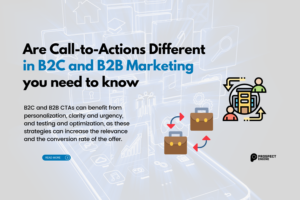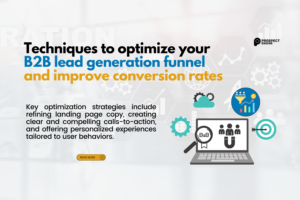A successful marketing-to-sales process is critical for any business that aims to grow and thrive in today’s competitive landscape. In today’s market, businesses need to engage with potential customers in a targeted and effective way, create a seamless customer experience, and build trust and credibility with their audience. Achieving these goals requires a well-designed and optimized marketing-to-sales process. This process starts with effective marketing that captures the attention of potential customers and guides them through the sales funnel toward a purchase. However, the success of this process depends not only on the quality of the marketing campaign but also on the smooth transition from marketing to sales. Without a well-defined and optimized transition process, businesses risk losing potential customers and missing out on valuable revenue. Therefore, it’s essential for businesses to prioritize and perfect the marketing-to-sales process to achieve success and grow their bottom line. This article will explore the importance of perfecting the process from marketing to sales and provide best practices for optimizing this critical business process.
The client journey has been drastically altered due to technological advancements and developments in digital marketing. There used to be a clear distinction between the tasks and responsibilities of the sales and marketing teams. However, things are much murkier today. Prospects may do more preliminary research on their own. As a result, it’s not always apparent where marketing stops and sales start. Establishing a current sales process that combines nicely with your marketing initiatives is vital in today’s marketplace. This article will guide you through creating the ideal marketing for the sales process that keeps your consumer and their demands in mind.
Roles And Channel Distribution
The requirement to increase relevance and value for a much more sophisticated and self-informed client while lowering the sale cost necessitates. It is a fundamental rethinking of both organizational architecture and channel mix. Clarifying roles, objectives, key performance indicators, and incentives is critical; to ensure that the appropriate people are matched with the right opportunities. Marketing now controls a more significant portion of the buyer’s journey. Marketers’ KPIs and incentives must prepare them for a new age of results and responsibility. More specialized positions are often necessary to give greater thought to leadership and value in sales. More technical positions are usually required to provide greater thought leadership and value in sales.
New marketing channels will undoubtedly comprise a significant portion of your channel mix. And new sales channels will also be necessary. An inside sales team is a systematic approach for quickly connecting high-value experts to prospects and expanding coverage across lower-value client groups while maintaining a low cost.
Increase Capability and Buy-In
Given the increased amount and diversity of customer contacts made by digital media, marketing, and sales will need to create a slew of new skills to manage technologies and generate leads across many new digital channels. It provides more data than ever about what consumers want and thinks about. Data analysis abilities will be crucial for marketers and salespeople. Marketers must also acquire the capacity to generate an increased volume and quality of content that cuts through on a sustainable basis. Sales will need to improve their commercial acumen and understand their industry, function, or solution to produce more insight and value from client interactions.
At this level, acquiring sales buy-in for new, more integrated procedures is a key pain point. Digital efforts, especially those led by marketing, can make sales feel threatened or displaced. To ensure that your pilots effectively gain sales acceptance, it pays to begin with a straightforward premise: sales will not buy in unless they experience it. As such, you will need to convince every salesperson of the advantages of change. The first crucial step is communicating the benefits of a digital future to sales, where they spend less time on administrative tasks and more time cultivating connections with clients. Pilots are the most effective method of proving the advantages of marketing and sales integration to all stakeholders. If your pilot impacts salespeople’s day-to-day roles, ensure that new procedures are straightforward, enabling, and integrated into their standard tools.
Create Mechanisms for Cross-Functional Planning
With the buyer’s journey covering various channels and functions, it’s critical to strengthen cross-functional planning procedures to guarantee the client is served cohesively at each point. This requires organizations to transition from a sales-driven account planning approach to a more collaborative one. Each function’s role and precise tasks must be specified concerning each step of the buyer’s journey. Establishing clear progression rules and the most effective actions for each party at each level assists buyers in progressing through their purchase experience and minimizes clunks.
Processes For Marketing and Sales Lead Handover
Developing an integrated strategy to guarantee sales can follow up and convert marketing-qualified leads promptly and efficiently with a more fluid purchasing process is vital. Marketing and sales must agree on a unified definition of qualified information. To develop an illustration, you must first understand how a prospect acts at each stage of the buyer’s journey. To begin, what are the trigger points and behaviors that signal buyer progression and sales readiness? Second, what level of customer action, attention, and purpose is necessary to justify sales involvement? After establishing these criteria, you may employ technology to automate and expand the handover and recycling of leads between marketing and sales.
Once your lead handover procedure is in place, two critical goals should be kept in mind: ensuring that follow-up occurs and that it occurs regularly and effectively. Frequently impeding a streamlined follow-up procedure is the fact that sales face inherent capacity and prioritization constraints. As a result, it is critical to establish dedicated resources, a well-defined operating model, or service level agreements that provide the capacity and responsibility for lead follow-up.
Create A Unified Operating Rhythm
It is doubtful that everything will go well when you implement new and more integrated marketing and sales operations. As a result, a continuous conversation and review process is vital to enabling early course correction. A refined and integrated marketing and sales operational rhythm must develop, allowing tactical agility in response to external changes and unprecedented cross-functional integration and cooperation. Collaboration forums and dashboards between marketing and sales are critical for guaranteeing targeted execution in key market segments. Essential pinch points, such as lead handoffs and sales lead acceptance, must be continuously monitored and fine-tuned. And to assist in building support for transformation programs, it is critical to analyze and present achievements regularly.
Execution With Hardwired Technology
Customer engagements and handoffs between marketing and sales are crucial. Similarly, technology and automation are also critical for operating and expanding your new go-to-market engine. One of the primary issues is determining how to get the correct data in front of the right staff member at the right moment. Several methods, but your technological stack will probably include CRM, marketing automation, and content management systems. Once these are established, you may maximize your technology’s value by automating processes, workflows, actions, and alerts.
Conclusion
When you initially begin integrating marketing and sales, it’s critical not to bite off more than you can chew. The key to success is to conduct commercially oriented pilots to demonstrate a tangible benefit to all parties involved. Pilots may be effective for expediting change projects and marketing and sales integration when performed correctly. By proving the benefits of transformation efforts, they may assist in gaining support, de-risking financing choices, testing hypotheses and learning in a controlled environment. To integrate new ways of working into business as usual.






